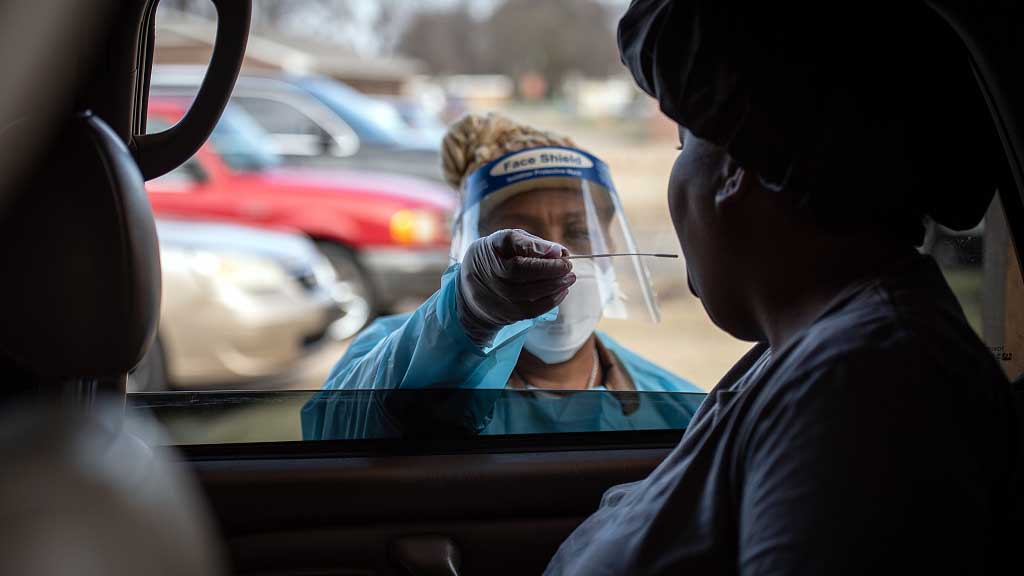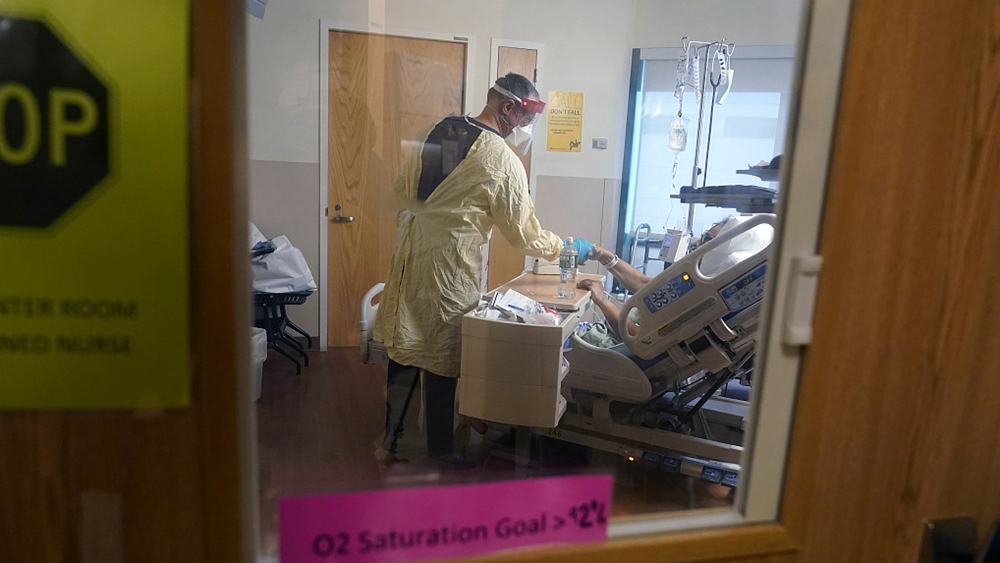00:26

The total number of COVID-19 cases in the United States topped 60 million on Sunday, according to data from Johns Hopkins University.
The U.S. COVID-19 case count rose to 60,062,077, with a total of 837,504 deaths, as of 4:21 p.m. local time (2121 GMT), the data showed.
The United States remains the nation worst hit by the pandemic, with the world's most cases and deaths, making up about 20 percent of the global caseload and more than 15 percent of global deaths.
The U.S. COVID-19 caseload reached 10 million on November 9, 2020, crossed 20 million on January 1, 2021, exceeded 30 million on March 24, surpassed 40 million on September 6, and amounted to 50 million on December 13.
As the highly infectious Omicron variant takes command amid the lingering pandemic, the significant infection surge of COVID-19 in the United States has put additional pressure on an overtaxed health care system.

A doctor visits a COVID-19 patient at Dartmouth-Hitchcock Medical Center, in New Hampshire, U.S., January 3, 2022. /CFP
A doctor visits a COVID-19 patient at Dartmouth-Hitchcock Medical Center, in New Hampshire, U.S., January 3, 2022. /CFP
"We have seen an incredible proliferation of the virus in hospitals, such that we went from a place where virtually no county in the country was at risk of exceeding its capacity to well over half are now," Jeremy Faust, an emergency physician at Brigham and Women's Hospital in Boston, was quoted as saying by ABC News on Sunday.
Although preliminary global studies indicate that the Omicron variant may cause less severe illness than prior variants, health officials said that the sheer numbers of infections caused by the new variant could still overwhelm the health care system.
The burden on the health care system is made worse by nationwide staffing shortages and hospital capacity at elevated levels as many other patients seek care for non-virus related reasons, ABC News reported.
The Omicron variant made up around 95.4 percent of new COVID-19 cases in the United States for the week ending January 1, the U.S. Centers for Disease Control and Prevention said in an estimate published on January 4.
Source(s): Xinhua News Agency

